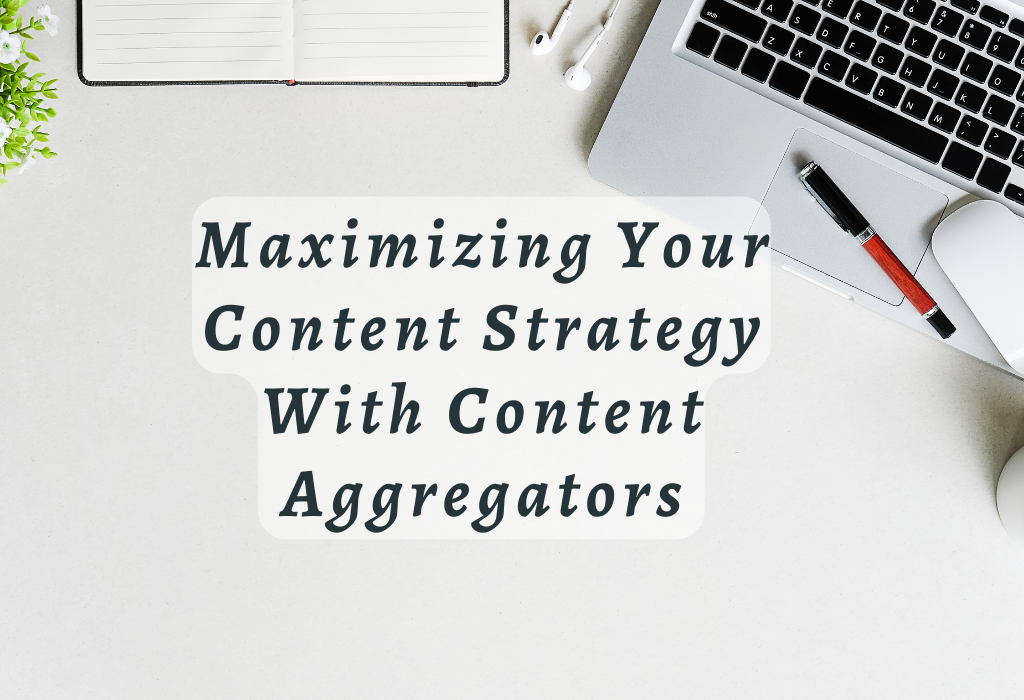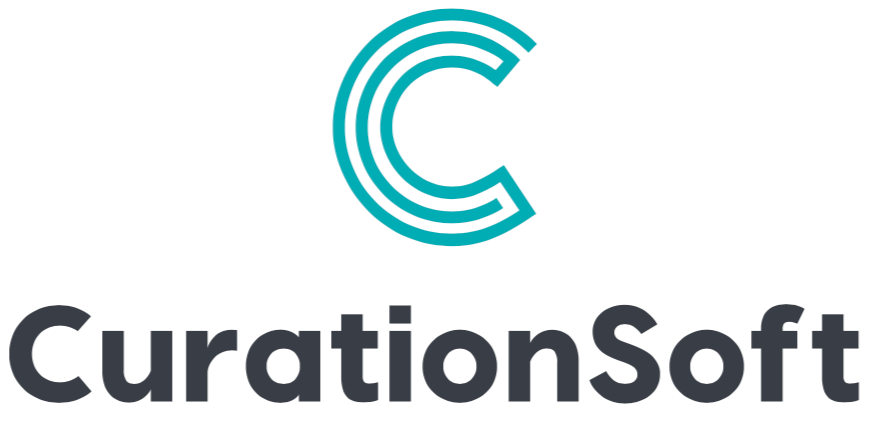Maximizing Your Content Strategy With Content Aggregators
Content aggregation is a powerful tool for marketers looking to expand their reach and maximize their impact. It involves the curation of content from various sources into one central hub, allowing users to access all relevant information in one place. Content aggregators are becoming increasingly popular as they provide convenience, simplicity, and visibility that, no other method can match. By understanding how these tools work and leveraging them strategically, marketers can capitalize on this trend to generate more traffic, leads, sales – even brand recognition!
In this blog post, we’ll discuss what content aggregators are; explore the benefits of using them; identify different types available; explain how to use them effectively; share tips for optimizing your strategy with these tools; and highlight any potential challenges you might face when working with them.

What is a Content aggregator?
A content aggregator is a tool or service that collects web content from various sources and compiles it into one place. It’s an efficient way to get the information you need without having to search through multiple websites. Content aggregation can be done manually by a person, or automatically using software tools.
Content aggregation Vs. content curation
Content aggregation differs from content curation as it does not involve creating original material; instead, it involves collecting existing materials and organizing them in one location for easy access. This makes it easier for users to find relevant information quickly and efficiently.
Benefits of Using Content Aggregators
Content aggregators are a powerful tool for marketers, providing an efficient way to find relevant information quickly and easily.
By eliminating the need to search multiple sources for the same information, content aggregators can save time and energy. Additionally, they can be used to monitor trends in the industry and keep up with the latest news and developments.
One of the main benefits of using content aggregators is that it allows marketers to access a wide range of data from different sources in one place. This eliminates the need to manually search through various websites or databases for specific pieces of information. Content aggregators also make it easier to compare different types of data from different sources side-by-side, allowing marketers to gain insights into their target audience’s preferences more quickly than ever before.
Another benefit is that content aggregation tools often come with built-in analytics capabilities which allow users to track performance metrics such as engagement rates or click-through rates over time. This makes it easy for marketers to identify what type of content resonates best with their target audience so they can adjust their strategies accordingly. Additionally, some content aggregation platforms offer features like automated alerts which notify users when new relevant topics become available on certain sites or channels – this helps ensure that no important updates go unnoticed by busy marketing teams.
Many content aggregation tools provide additional features such as keyword tracking or sentiment analysis which enable users to better understand how people feel about certain topics online – invaluable insight when trying to craft effective campaigns. All these features combined make using a content aggregator an incredibly useful tool for any marketer looking to stay ahead in today’s competitive landscape.
Using content aggregators can help marketers create a comprehensive strategy to reach their target audience and maximize the visibility of their content, making them an invaluable tool for any marketing team. Now let’s look at the different types of content aggregators available.
Key Takeaway: Content aggregators are a valuable tool for marketers, allowing them to save time and energy by accessing data from multiple sources in one place, tracking performance metrics with built-in analytics capabilities, and gaining insight into customer sentiment.
Best Content Aggregation Tools in 2023
Here are some of the best content aggregation tools available this year:
Octoparse is a free web crawler that helps marketers gather large amounts of data from virtually any website without needing coding knowledge. Octoparse can be used to scrape content from sites like The New Yorker, Medium, and Reddit, which can then be uploaded into your own CMS. It also allows users to monitor people’s interests and trending topics by collecting content from social media platforms.
Google News is another great source of content aggregation tools for marketers in 2022. This news aggregator service offers continuous personalized links to thousands of magazines, newspapers, and publishers around the world. You can specify a period when you want returned results or set up e-mail alerts with Atom or RSS feeds related to specific keywords or topics that will be sent directly to your inbox.
Feedly is a useful tool for gathering relevant information quickly and easily in 2023 as it provides access to millions of articles on different topics through its user-friendly interface. Feedly also has features such as automatic sorting based on relevance, personalization options based on user preferences, search capabilities across multiple channels simultaneously, and integration with other services like Twitter or Pocket so users can save their favorite stories for later reading.
Finally, BuzzSumo is an invaluable resource for finding popular pieces of online content related to any topic imaginable – whether it’s industry trends or viral memes – making it one of the most comprehensive collection tools out there today! BuzzSumo offers insights into what kind of posts are performing well within certain industries as well as who’s sharing them so you know exactly where your target audience hangs out online too!
How to Use Content Aggregators Effectively
To get the most out of content aggregators, it is important to understand how each type works and what features are available on each platform.
1. Apply Filtering Options
Some content aggregators may offer filtering options such as date ranges or languages so you can narrow down your search results more effectively. For example, if you want to find articles about a certain keyword written within the last month in English only, then setting up those parameters will ensure that all results meet those criteria before appearing in your feed.
2. Create Custom Feeds
You can also create custom feeds with specific keywords or topics; while still getting recommendations based on your preferences or browsing history.
3. Use Keywords Effectively
When searching for relevant content, use keywords effectively so you can find exactly what you’re looking for quickly and easily without wasting time sifting through irrelevant results.
4. Consider Smaller Niches
Finally, be sure to not only look at popular sources but also consider smaller niche outlets that could potentially yield better quality leads than larger ones due to their more targeted audiences.
5. Regularly Update Your Library
When utilizing content aggregation strategies, it’s important to regularly update your library with fresh content from reliable sources.
6. Set Alerts
Setting up alerts allows you to stay informed about new developments in the industry so that you can adjust your strategy accordingly.
Content aggregators can be a powerful tool for marketers to increase their reach and visibility, but it’s important to use them strategically.
Key Takeaway: Content aggregators can save time and help boost SEO rankings by quickly providing access to a variety of sources. To use them effectively, consider features like filtering options, custom feeds, keyword searches, and niche outlets.
Tips for Optimizing Your Content Aggregation Strategy
When optimizing your content aggregation strategy, it’s important to follow these optimization techniques:
Use Tagging Systems
Tagging systems are also beneficial when optimizing a content aggregation strategy as they allow users to easily organize their library of collected material according to different categories or topics. For instance, if you have articles about digital marketing stored under one tag and articles about SEO stored under another tag then it becomes much simpler for marketers to access this information whenever necessary without having to manually search through hundreds of files each time they require something specific.
Prefer Quality on Quantity
Finally, it’s important to not just focus on quantity but also the quality when using a content aggregator tool – after all, there is no point in collecting thousands of irrelevant pieces of data. Therefore make sure that whatever sources you choose are reliable ones with accurate information so as not to waste valuable time reading through inaccurate posts which could potentially damage your reputation if shared publicly without proper verification first.
Key Takeaway: Content aggregation tools can help marketers quickly identify relevant topics and trends while saving time. Key elements to optimize your content strategy include setting up alerts, creating filters, tagging systems, and focusing on quality over quantity.
Challenges with Content Aggregation
Content aggregation can be a great way to find and share quality content with your audience, but it also comes with some challenges.
Key Takeaway: Content aggregation can be a great way to find and share quality content, but it’s important to vet sources, uses organizational tools, reviews posts carefully before sharing them publicly and create unique visuals for differentiation.
FAQs about Content Aggregators
Conclusion
By using content aggregators, you can quickly and easily create a steady stream of fresh content that will keep your audience engaged. With the right strategy in place, you can maximize the effectiveness of your content aggregation efforts while minimizing any potential challenges. As long as you are mindful of best practices when it comes to content aggregators, such as keeping track of where your content is being shared and monitoring its performance regularly, then you should be able to make great use of this invaluable resource.
Are you looking for a way to optimize your content marketing and SEO strategies? CurationSoft is the perfect solution! Our powerful platform allows you to quickly find, organize, and curate high-quality content from across the web into one central location. With our user-friendly interface, it’s never been easier or faster to identify trends in topics that matter most to your business. Take control of your online presence today with CurationSoft – try us out now and see how we can help make sure all of your content aggregator efforts are successful!






